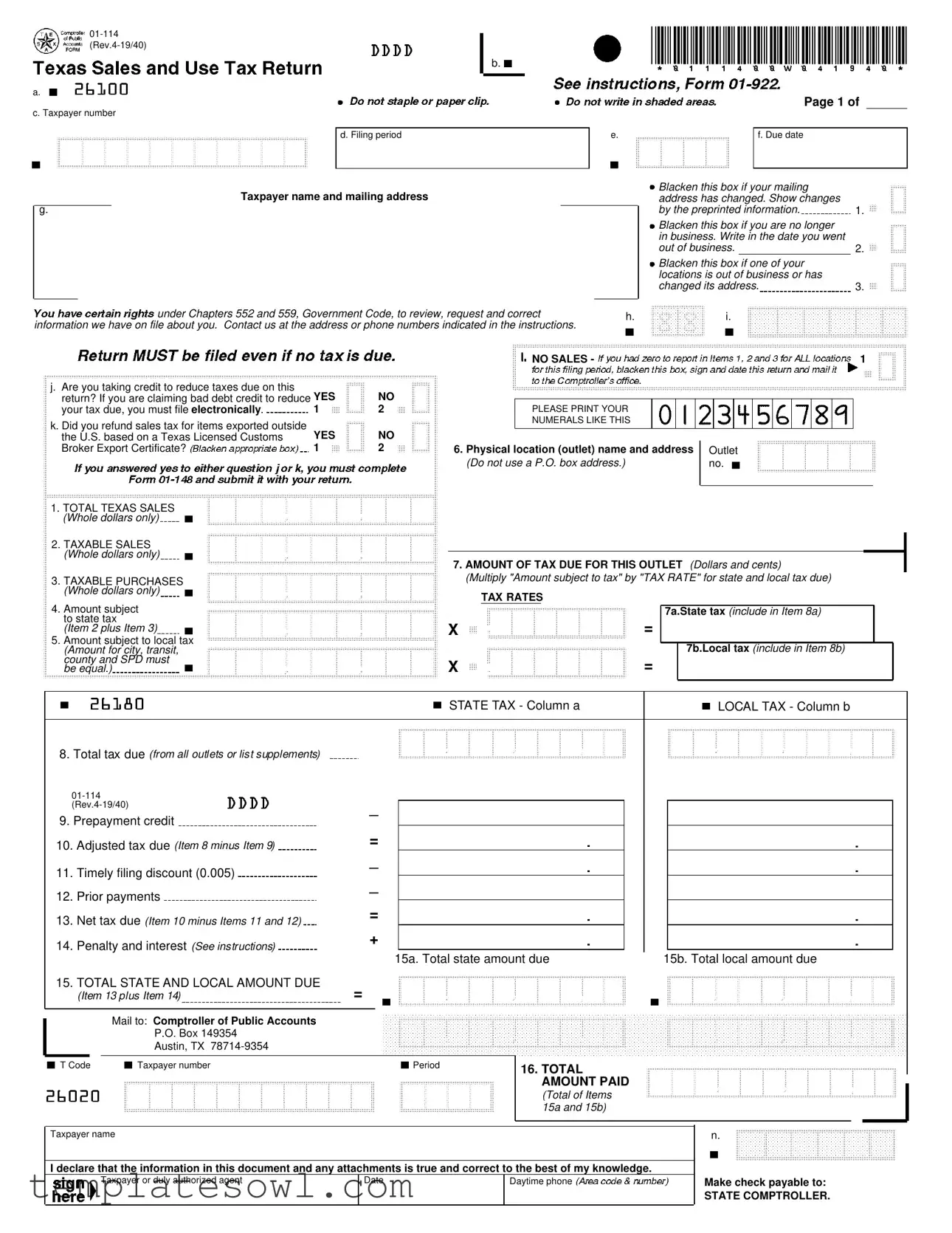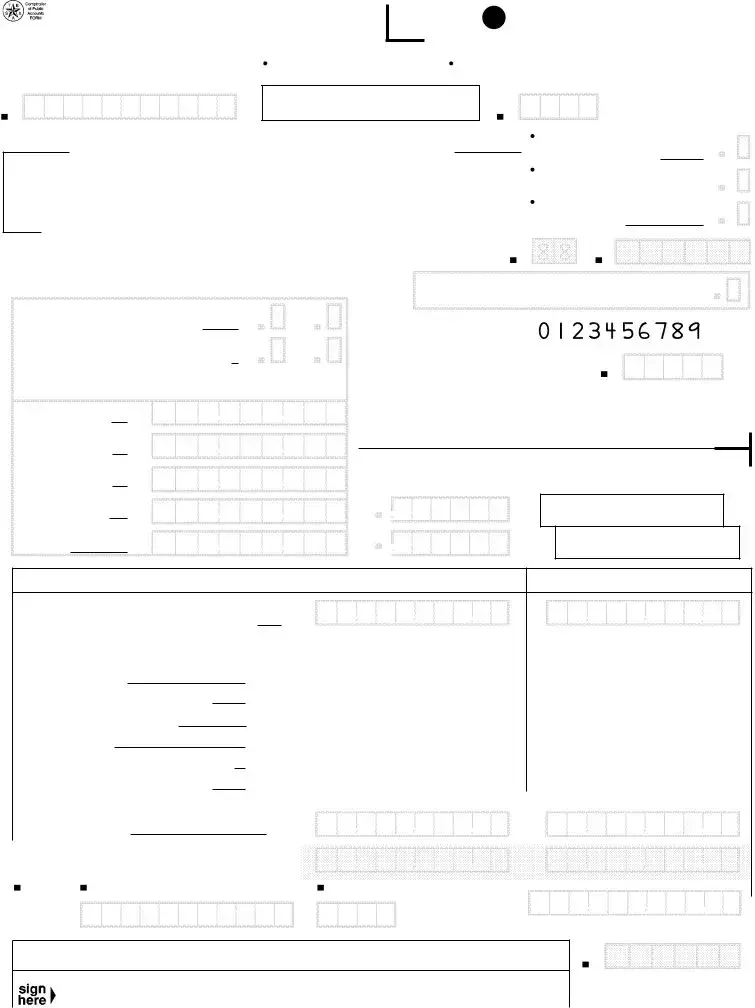What is the 1 114 Texas form used for?
The 1 114 Texas form is used for filing sales and use tax returns in the state of Texas. It allows taxpayers to report their total sales, taxable sales, and any tax due to the state or local jurisdictions. This form assists the Texas Comptroller’s office in collecting the appropriate taxes based on the taxpayer's sales activities.
Who needs to file the 1 114 Texas form?
Any business or individual engaged in selling taxable goods or services in Texas is required to file this form. This includes companies with physical locations, as well as those soliciting sales in Texas through other means, such as online sales.
When is the 1 114 Texas form due?
The due date for filing the 1 114 Texas form typically aligns with the end of each month for monthly filers. It is essential to check your filing frequency, as some businesses may have quarterly or annual filing requirements. Ensure that your form is postmarked or submitted electronically by the due date to avoid late fees.
What information is required on the 1 114 Texas form?
The form requires various details, including your taxpayer number, name, and address, along with information regarding sales, taxable purchases, tax amounts, and the outlet's address. It's critical to fill out these sections accurately to avoid processing delays.
What should I do if my mailing address has changed?
If your mailing address has changed, you should check the applicable box on the form and provide the updated information. This ensures that all correspondence regarding your account reaches you promptly.
Can I submit the form electronically?
Yes, you can file the 1 114 Texas form electronically. If you are claiming a debt credit to reduce taxes due, electronic submission is mandatory. Submitting online can streamline the process and provide immediate confirmation of your submission.
What happens if I am no longer in business?
If you are no longer in business, you should check the box indicating your cessation of business on the form. Then, provide the date you went out of business. This will help the Comptroller’s office update their records accordingly.
How do I calculate the amount of tax due?
The amount of tax due is calculated by multiplying the amount subject to tax by the applicable tax rate. Ensure you separate state and local tax amounts and include those in their respective sections on the form.
What should I do if I have further questions about the form?
If you have additional questions, you can contact the Texas Comptroller's office using the phone numbers or addresses provided in the instructions accompanying the 1 114 Texas form. They are available to assist with any uncertainties you may have regarding the filing process.
How do I make my payment?
Payments for the tax due should be made payable to the "STATE COMPTROLLER." You can include your payment with the form when mailing it to the address provided. Ensure that all payment information is accurate to avoid any processing issues.



